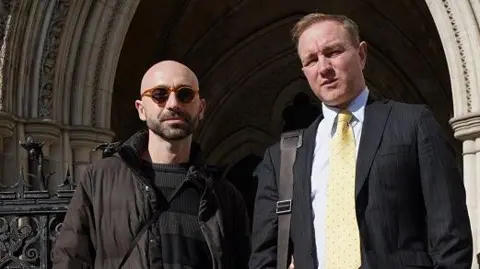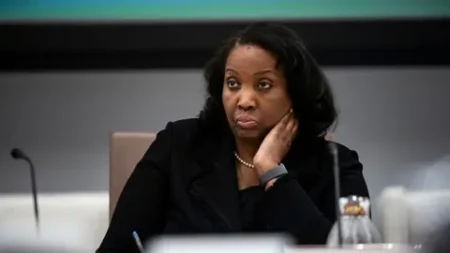The recent quashing of the convictions of two former City traders, Tom Hayes and Carlo Palombo, by the UK’s Supreme Court has ignited discussions within financial and legal communities regarding the nature of rate-rigging and its ramifications. This decision, stemming from a lengthy ten-year legal struggle, marks a pivotal moment in understanding the dynamics of accountability in the finance sector, particularly in light of their previous sentences for manipulating critical interest rates.
Hayes and Palombo were originally convicted for their involvement in the manipulation of the London Interbank Offered Rate (Libor) and the Euro Interbank Offered Rate (Euribor), benchmarks crucial for determining lending costs across various financial sectors, including mortgages and car loans. The manipulations they engaged in allegedly contributed to events leading up to the 2008 financial crisis, a claim Hayes strongly refuted post-conviction. Their case exemplified a broader crackdown on financial misconduct that became prominent in the aftermath of the financial crisis, as authorities sought to restore public trust in the banking system.
At the heart of their convictions were accusations that Hayes operated as the “ringmaster” of a conspiracy to influence these benchmarks for profit, with his actions viewed as indefensible by regulators. Hayes received a 14-year imprisonment sentence in 2015, which was later reduced to 11 years, while Palombo was sentenced to four years in 2019. New evidence, however, combined with a deeper legal assessment of their trials, led to the Supreme Court overturning their sentences, categorizing the trial processes as fundamentally flawed.
One of the significant arguments presented by Hayes during his appeals was that while he did attempt to manipulate the Libor rates, such behavior was a common practice within the banks for which he worked, which included UBS and Citibank. He portrayed himself as a scapegoat for the industry’s malpractices, a position supported by Palombo, who echoed that such manipulations were standard in financial routing. This revelation has raised questions about the systemic nature of financial misconduct at various levels, including the potential complicity of executives and regulatory bodies.
Adding another layer to this narrative is the broader implication of rate-rigging on a global scale. Historical assessments indicate that a number of individuals were prosecuted for such financial misdemeanors from 2015 to 2019; yet, notable figures within government and central banking institutions who may have influenced or facilitated these practices were never held accountable. This reality starkly contrasts the legal repercussions faced by traders like Hayes and Palombo. The apparent inconsistency in holding high-level officials accountable compared to lower-level employees has prompted calls for more rigorous oversight and reform within the justice system.
The Supreme Court’s ruling specifically noted that miscommunication during trials led to jury directions that rendered convictions unsafe. Following this ruling, the Serious Fraud Office acknowledged that pursuing a retrial would not serve the public interest, further illustrating shifts in the case’s viability post-appeal. As Hayes expressed hope for reclaiming his seized assets, he also highlighted the profound personal impact of his situation on his family life, underscoring the long-lasting implications of their wrongful convictions.
Political responses have also quickly emerged, with some MPs calling for inquiries into the circumstances surrounding rate-rigging and its prosecution. Advocacy for structural changes within prosecuting bodies, particularly concerning the Serious Fraud Office and its dual roles, has been highlighted as urgent to prevent future miscarriages of justice. This case underscores the need for transparency in high-stakes financial practices and the intricate interplay between regulatory actions and judicial processes.
Through this episode, Hayes and Palombo’s legal battle illustrates not only the complexities of financial regulations but also the potential for systemic reform within both banking practices and legal accountability. The quashing of their convictions may pave the way for other individuals, potentially wronged by similar prosecutions, to seek justice and reestablish their reputations in the financial sphere.












